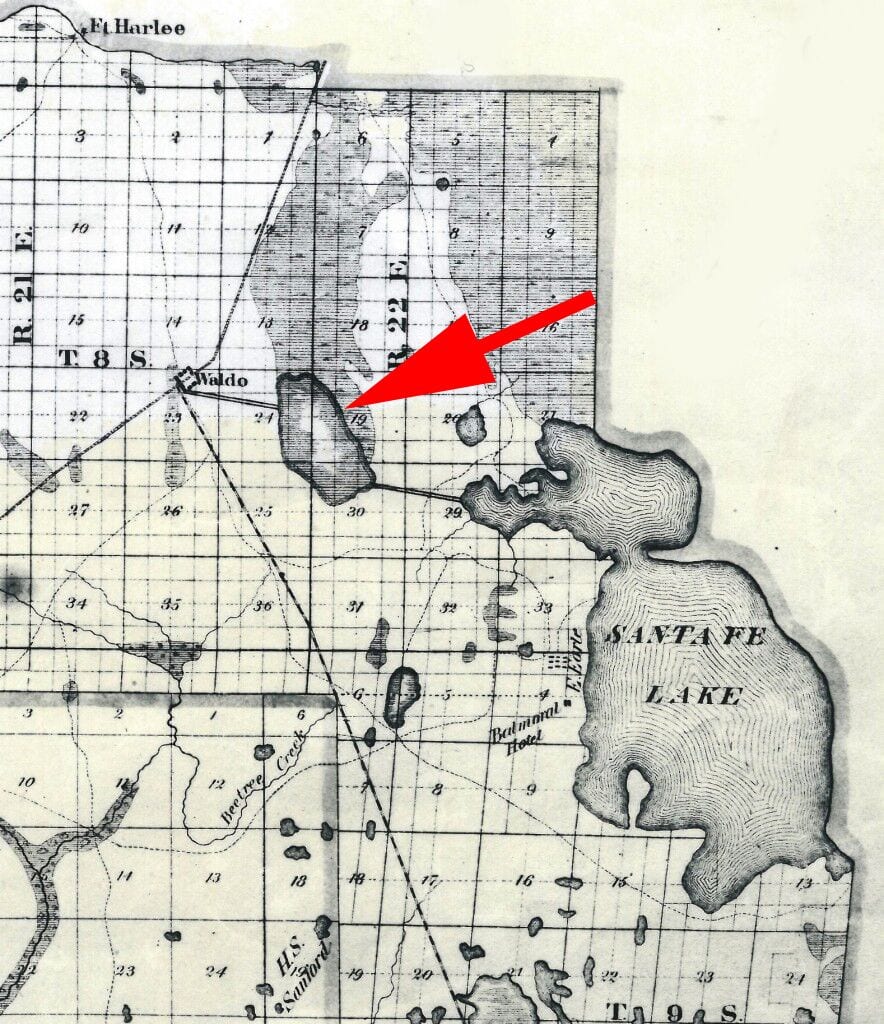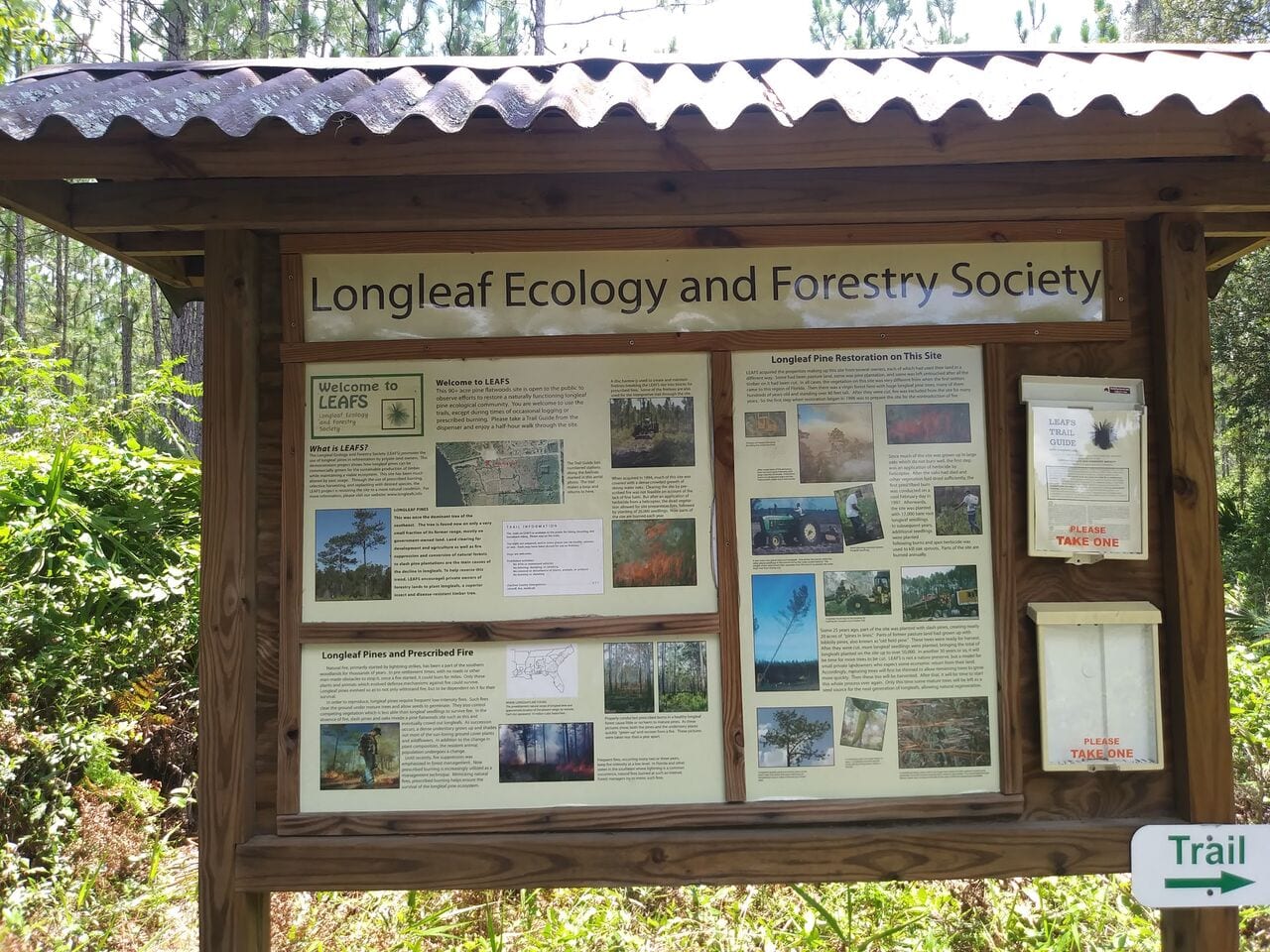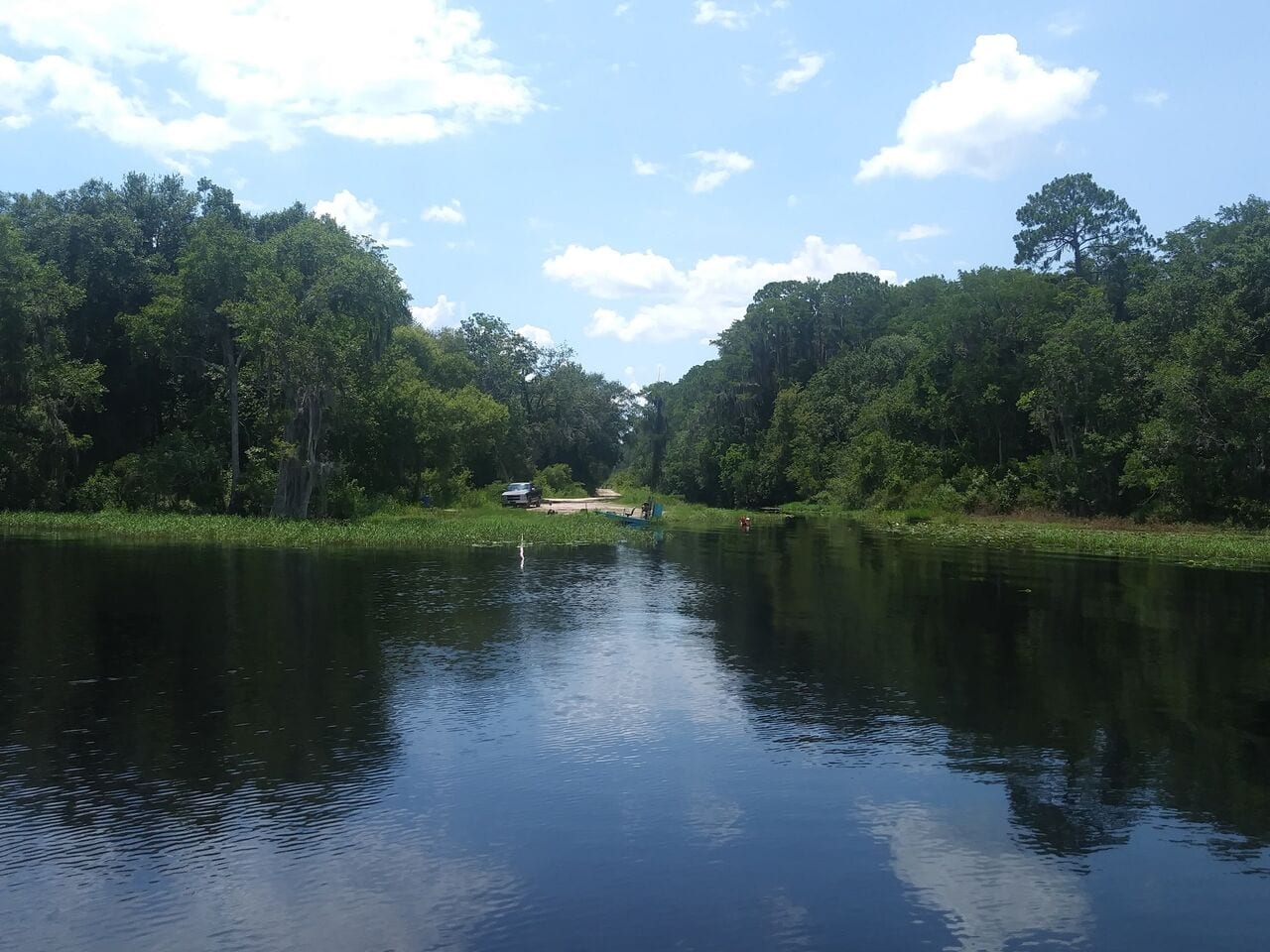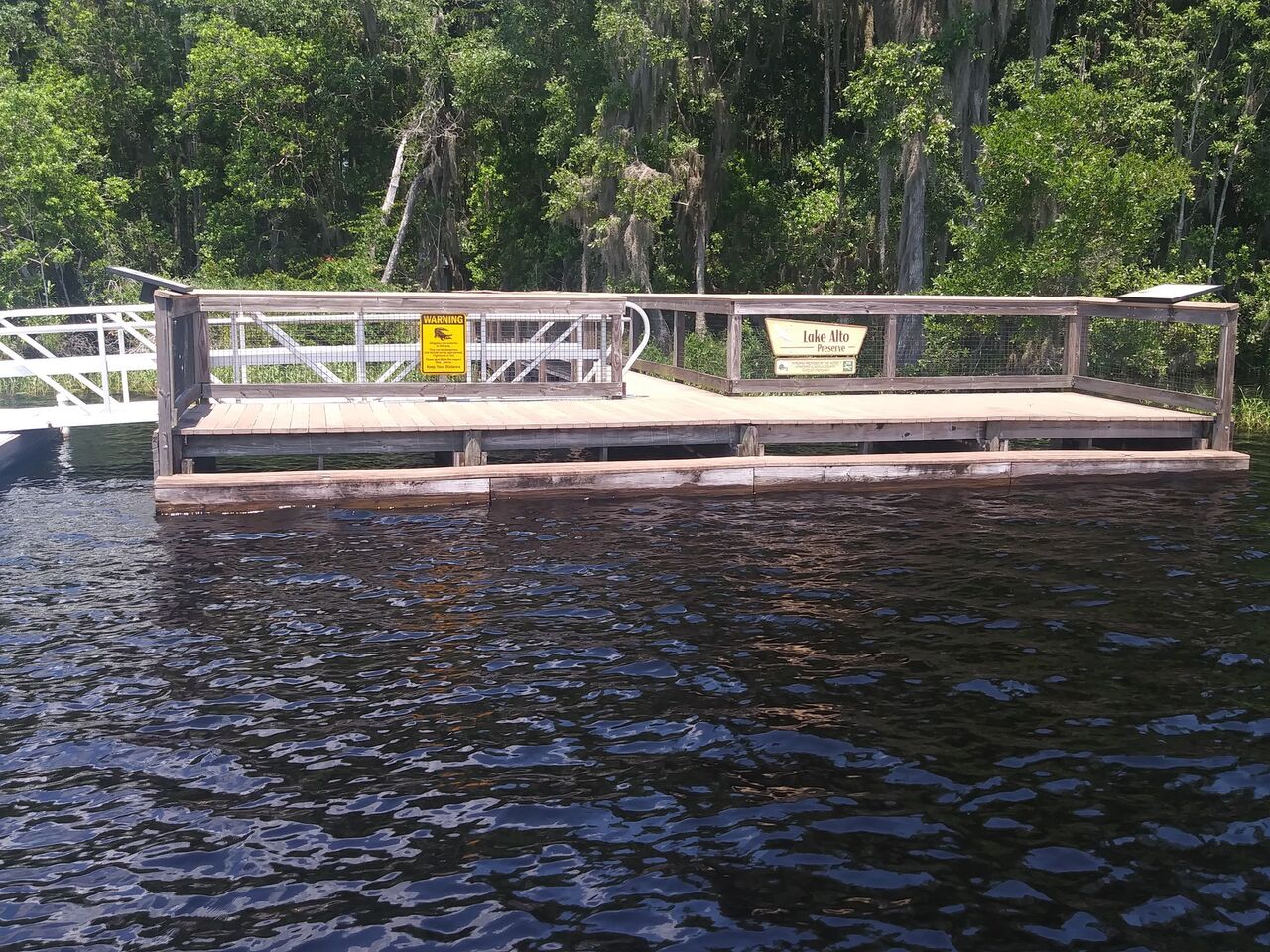Florida Waterways
“Lake Alto”
By Kevin McCarthy
CAPTIONS:
The red arrow points to Lake Alto.
The boat ramp in Lake Alto Park
Displays about LEAFS
Good fishing spot in the lake
The entrance to the canal leading to Waldo
A dock along the lake
Lake Alto is a 573-acre waterway in Alachua County, south of Waldo. The lake and the much larger Santa Fe Lake, are the headwaters for the Santa Fe River and the highest points in the county. There are relatively few homeowners around the lake(maybetwo dozen), partly because the land along the northern edge of the lake is swampy and unsuitable for building.
Non-resident boaters can access the lake by a decent boat ramp at Lake Alto Park, located at N.E. 134thPlace off U.S. 301, south of Waldo and north of Orange Heights. The park there has a kiosk that fishermen use, and a display for LEAFS(theLongleaf Ecology and Forestry Society), but no restrooms. Hiking trails there, are in the midst of a native longleaf pine ecosystem that has been restored by LEAFS, which has also put up displays and maps for the area. Two nearby residents, Donna and Bob, took me around the whole lake in their boat and pointed out that the depth of the waterway is about sixteen feet.
The sandy bottom lake is good for catching bass, brim, and catfish, as well as swimming, but the lake does have alligators that need to be avoided. The lake also has entrances to canals that played a major role in the economic development of the area in the late 19thcentury. Located at both ends, and sometimes overgrown with weeds, the canals connect with Little Santa Fe Lake at the southeastern entrance, and that leads to Santa Fe Lake and Melrose Bay. The canal at the northwestern edge of Lake Alto connects to the town of Waldo.
In the 1880s and 1890s those canals allowed farmers in the Melrose area to ship produce, especially citrus, to the railroad at Waldo and then to markets elsewhere. Displays in museums in Melrose and Waldo show pictures and models of the steamboats that used to go through the lakes and two canals. Freezes in the 1890s wiped out the citrus industry in the area, but the canals, when dredged from time to time, make the lakes accessible to a wide variety of boats.
Those lucky enough to discover the lake, or even to live along it, are able to enjoy one of the hidden gems of a pristine waterway in north-central Florida. Those who come upon it by chance, or who have read about it in the histories of Melrose and Waldo, can sample an important lake in the history of our state, and some good fishing.
Kevin McCarthy, the author of“Melrose,Florida: An Illustrated History(2017- available at amazon.com), can be reached at ceyhankevin@gmail.com.






